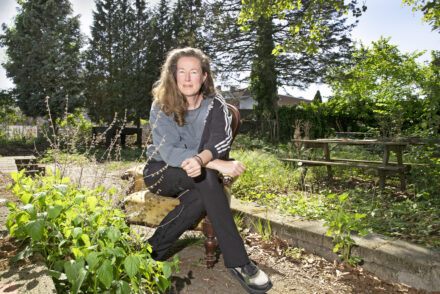‘Tilburg’s forgotten resistance women deserve a place in history’
In Nazi-occupied Tilburg, women were a crucial force in the resistance. They fought in the shadows. And when the war ended, they were kept in the shadows to be forgotten. It has taken 75 years, but a research group led by Astrid de Beer (Regional Archives Tilburg) and Liesbeth Hoeven (Tilburg University) is now finally giving them their rightful place in history.
Why have most Tilburgers never heard of Jopie van Dongen, Céline Diepen, Blanche Pirottin, Kitty van Huijgevoort or the sisters Miet and Net Schijns? Why is it that their names are not mentioned in history books, not honored by street signs, not carved into monuments?
According to cultural scientist Liesbeth Hoeven, these and many other resistance heroines have been unjustly overlooked and forgotten for decades. “During the war, women played a crucial role in the resistance against the Nazi occupation,” she said last week at a symposium held at the Regional Archives of Tilburg. “But they have been left out of history.”

Liesbeth Hoeven speaking at the symposium ‘Heroines of the Tilburg resistance’. Photo: William van der Voort
57 women
After one year of research, mostly based on personal letters and diaries, Liesbeth Hoeven and a team of researchers from the Regional Archives were able to identify 57 Tilburg women who participated in the resistance. They collected their names and stories in a book, Haar verhaal, which was launched at the symposium.

Tilburg resistance women. Photo: Regional Archives Tilburg
It was extremely difficult to find out who Tilburg’s resistance women were and what they did, Hoeven said. “Because nothing was ever written about most of these women, we had to look for them with a lamp in broad daylight. In reality, the number of Tilburg women who risked their lives to resist the occupation and to protect the persecuted was undoubtedly much higher.”
Invisible acts of resistance
For decades, the stories of Tilburg’s unremembered war heroines have been obscured by the myth that the resistance was spectacular, militant and male. But women’s resistance activities were often neither armed nor visible.
“Because women attracted less suspicion from German soldiers, they were at the forefront of daily resistance,” Hoeven explained. “They acted as couriers, smuggled crashed allied pilots over the border, and provided shelter and help to Jews and other people in hiding.”

Leonie van Harssel (1919-1998) helped shot down pilots escape to Belgium. Photo: Regional Archives Tilburg
A history written by men
“After the war, the resistance became a history written by men, about men,” said historian Sanne Schraa, who also worked on the research project. “Women’s resistance activities were reduced to ‘chores’ and ‘errands’, and the women themselves were defined as ‘the assistant of’, ‘the widow of’ or ‘the girlfriend of’. By using such terms, the women of the resistance were deliberately manoeuvred into an inferior position.”
According to the researchers, women were the backbone of the resistance. Now, 75 years after the liberation, Tilburg’s forgotten war heroines are finally brought out of the shadows and into the spotlight. Liesbeth Hoeven: “They deserve a place in history.”






